Diary
Summer Pilgrimages
Art chapels around the world
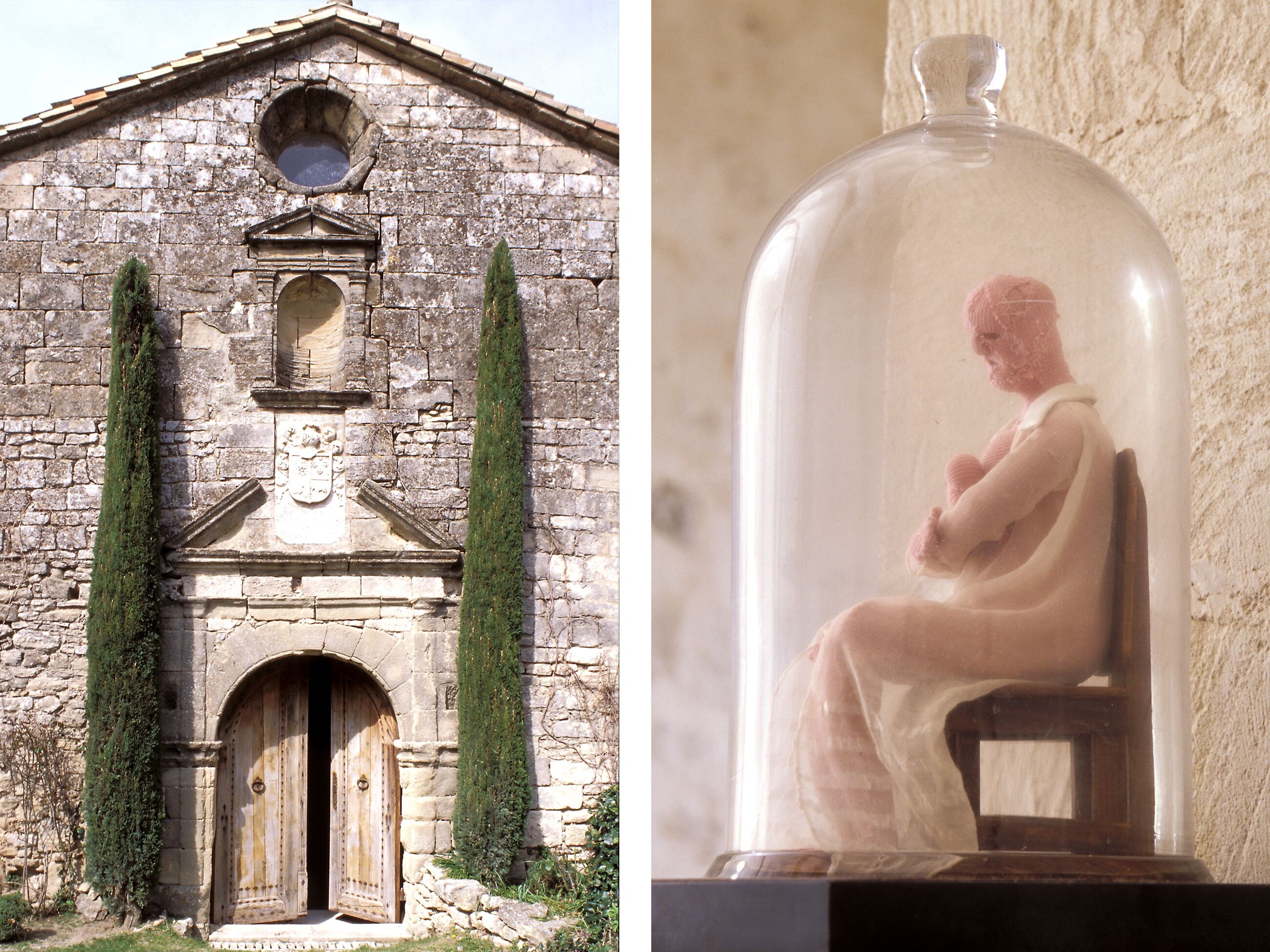
Église Louise Bourgeois, Bonnieux, France. Photo: Jean-François Jaussaud © The Easton Foundation / DACS, London and VAGA at Artists Rights Society (ARS), New York
From monophonic chants to intricately tiled domes, frescoed walls to gilded bronze statues, the expressive and symbolic power of art has played a central role in places of worship for millennia. “Art is not a luxury, but a necessity of the spirit,” the late Pope Francis once said. “Authentic art is always an encounter with mystery—with a beauty that overtakes us, with a pain that interrogates us, with a truth that calls to us.” This summer, Ursula shares ten contemporary sites of artistic devotion.
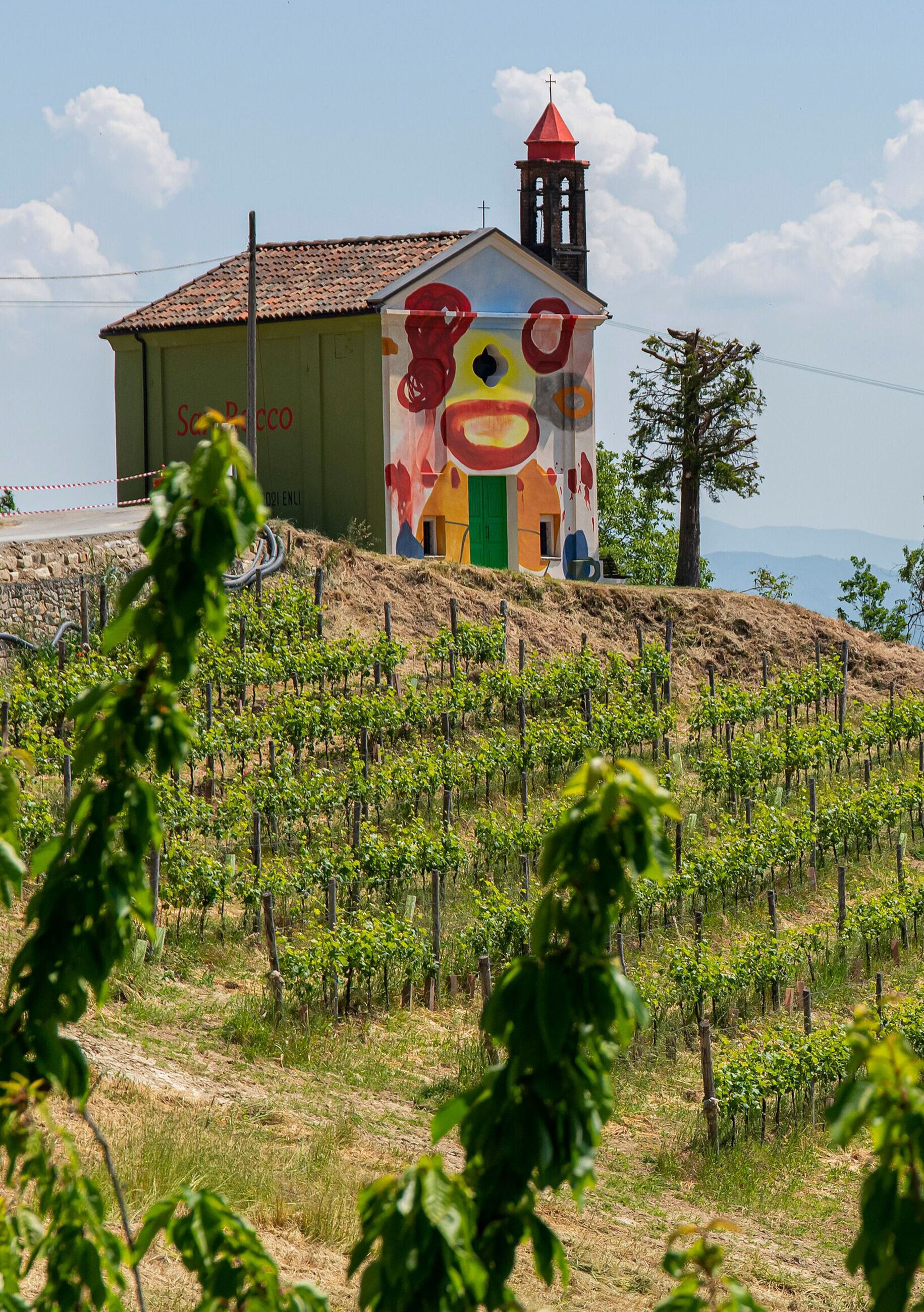
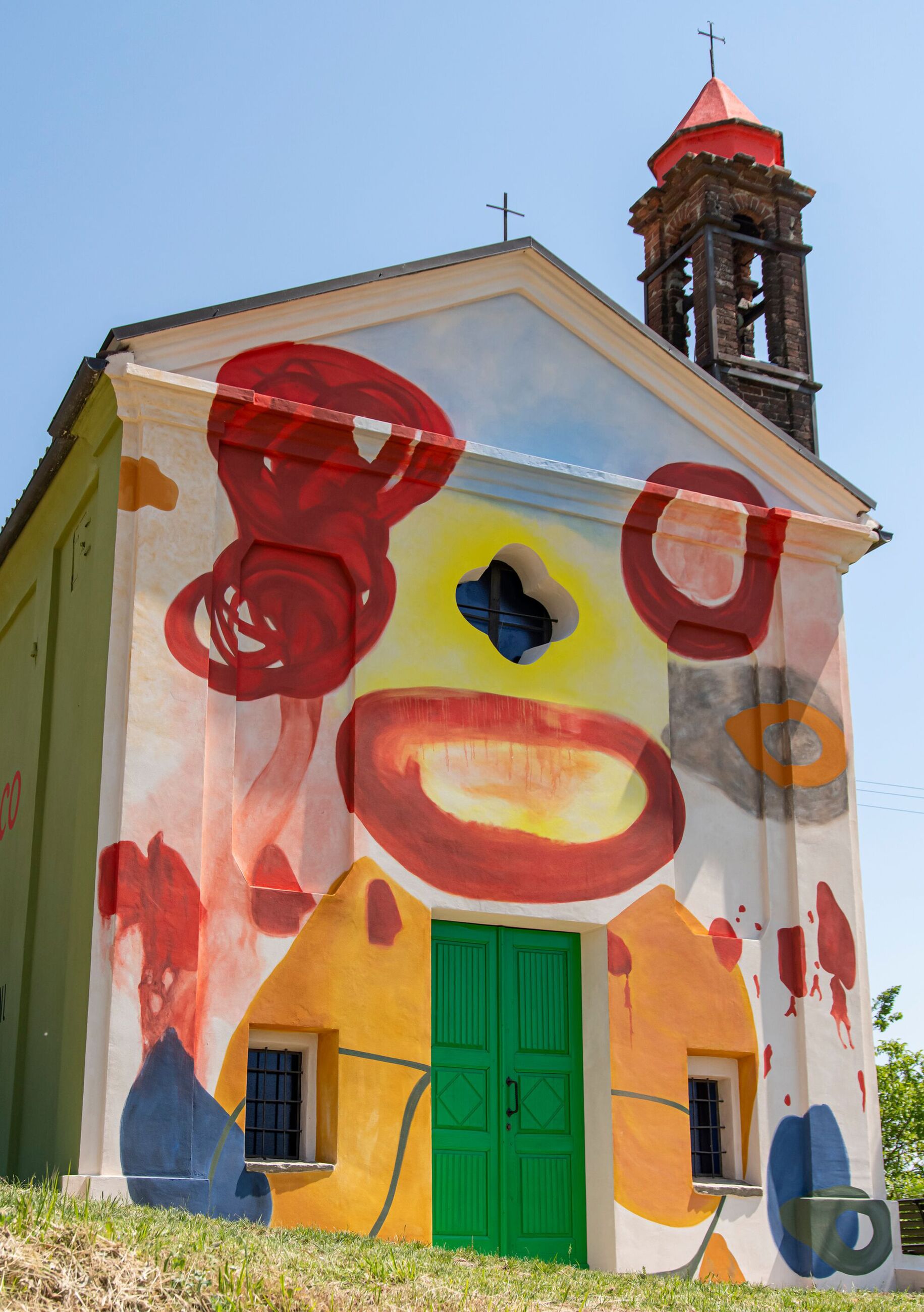
Zhang Enli, A Cheerful Person, 2021. Church of San Rocco, Montabone. Photo © Giorgio Perottino/ Artissima. Courtesy of the artist and Hauser & Wirth
A Cheerful Person
San Rocco, Montabone, Italy
Nestled in the rural commune of Montabone, among the vineyards of Brachetto d’Acqui, sits A Cheerful Person, a site-specific intervention by Chinese artist Zhang Enli. The 18th-century chapel, transformed as part of the Art Mapping Piemonte project, features a loosely painted smiling face that playfully harmonizes with the architectural façade.
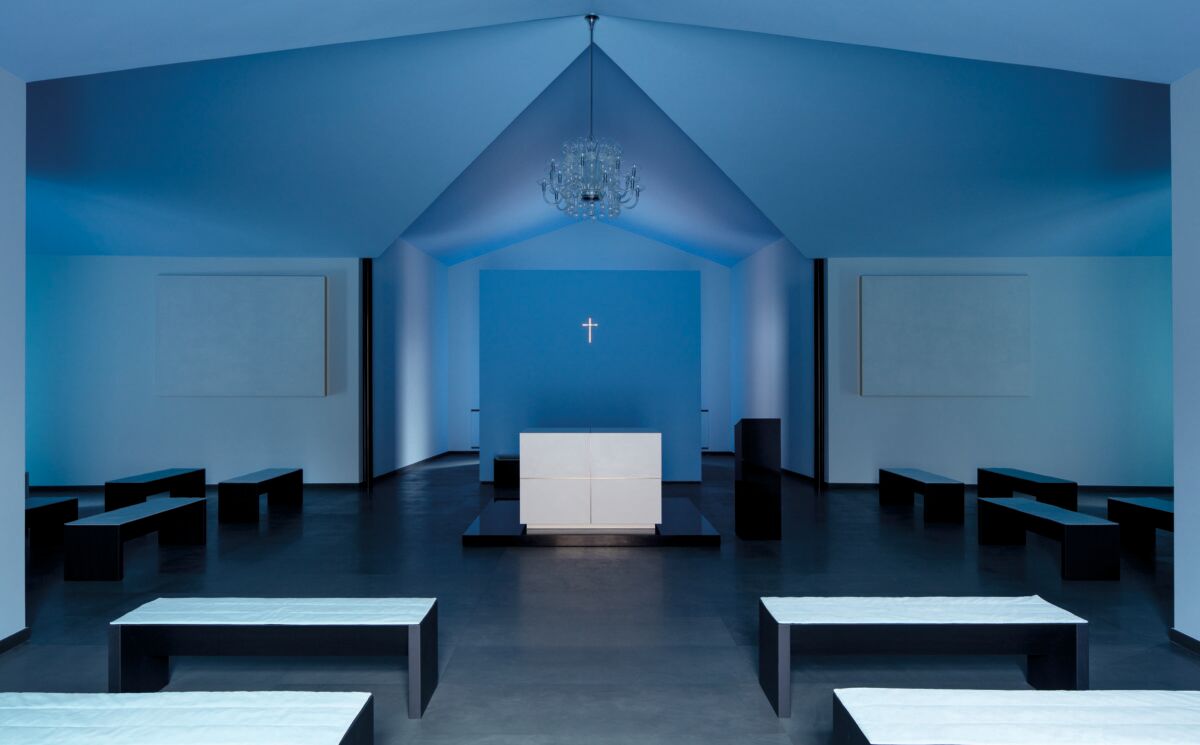
Ettore Spalletti, Patrizia Leonelli, Cappella, 2016. Casa di Cura Villa Serena, Città Sant’Angelo – Pescara, Italy © Ettore Spalletti/Patrizia Leonelli. Photo: Werner J. Hannappel

Simple, geometric forms play out in the space designed by Ettore Spalletti and Patrizia Leonelli © Ettore Spalletti/Patrizia Leonelli. Photo: Werner J. Hannappel
Cappella di Villa Serena
Pescara, Italy
Shifting from intense to pale blue hues, late Italian artist Ettore Spalletti’s chapel activates color as material in this unique place of worship, located on the grounds of a small private hospital. A phenomenal study in the perception of space, light and form, the chapel was created in collaboration with architect Patrizia Leonelli. “I thought of the church as a contemplative space,” said Spalletti, “a place where you can pray or simply sit in silence. For me, this is exactly what one seeks in a picture.”
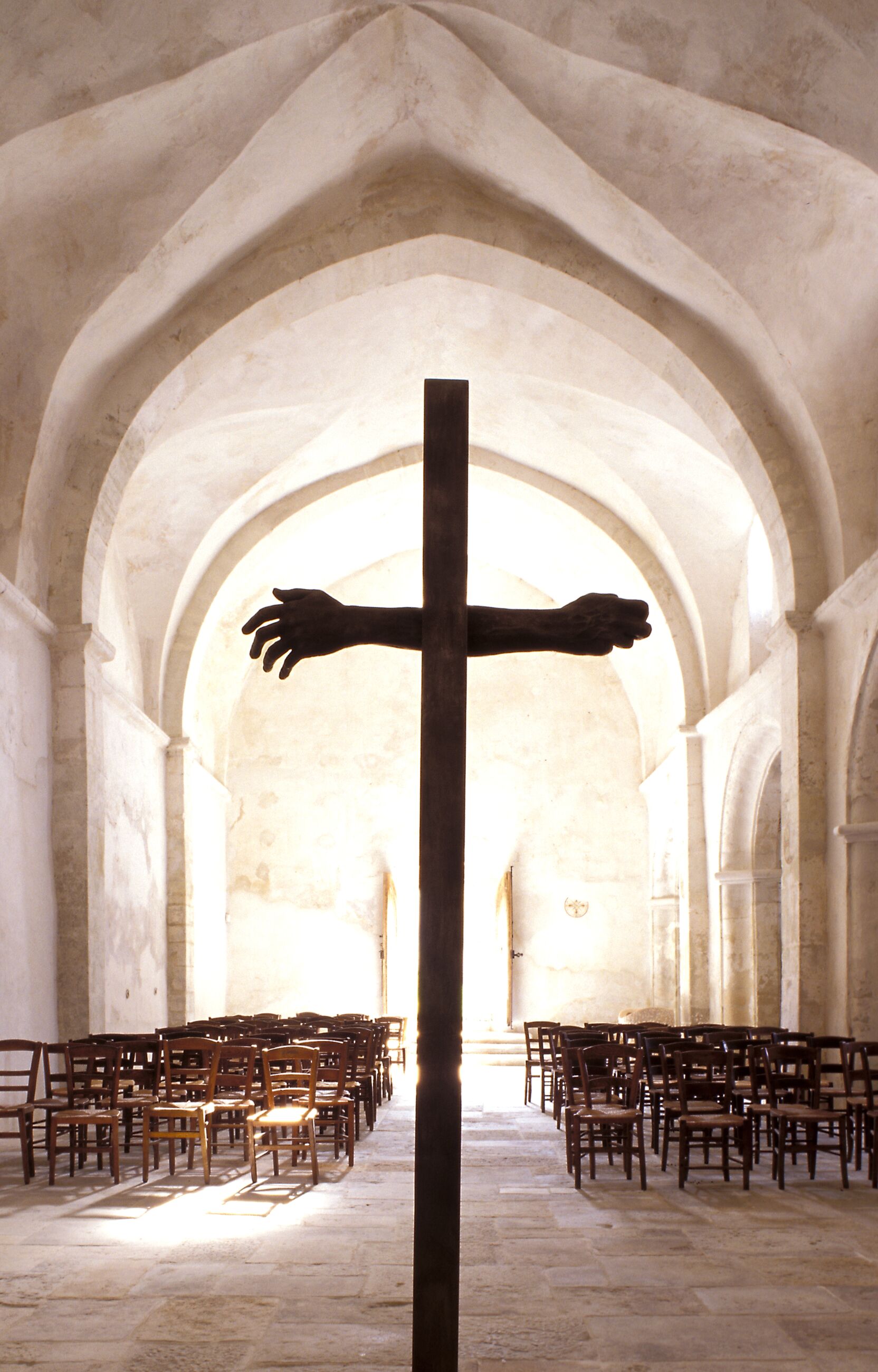
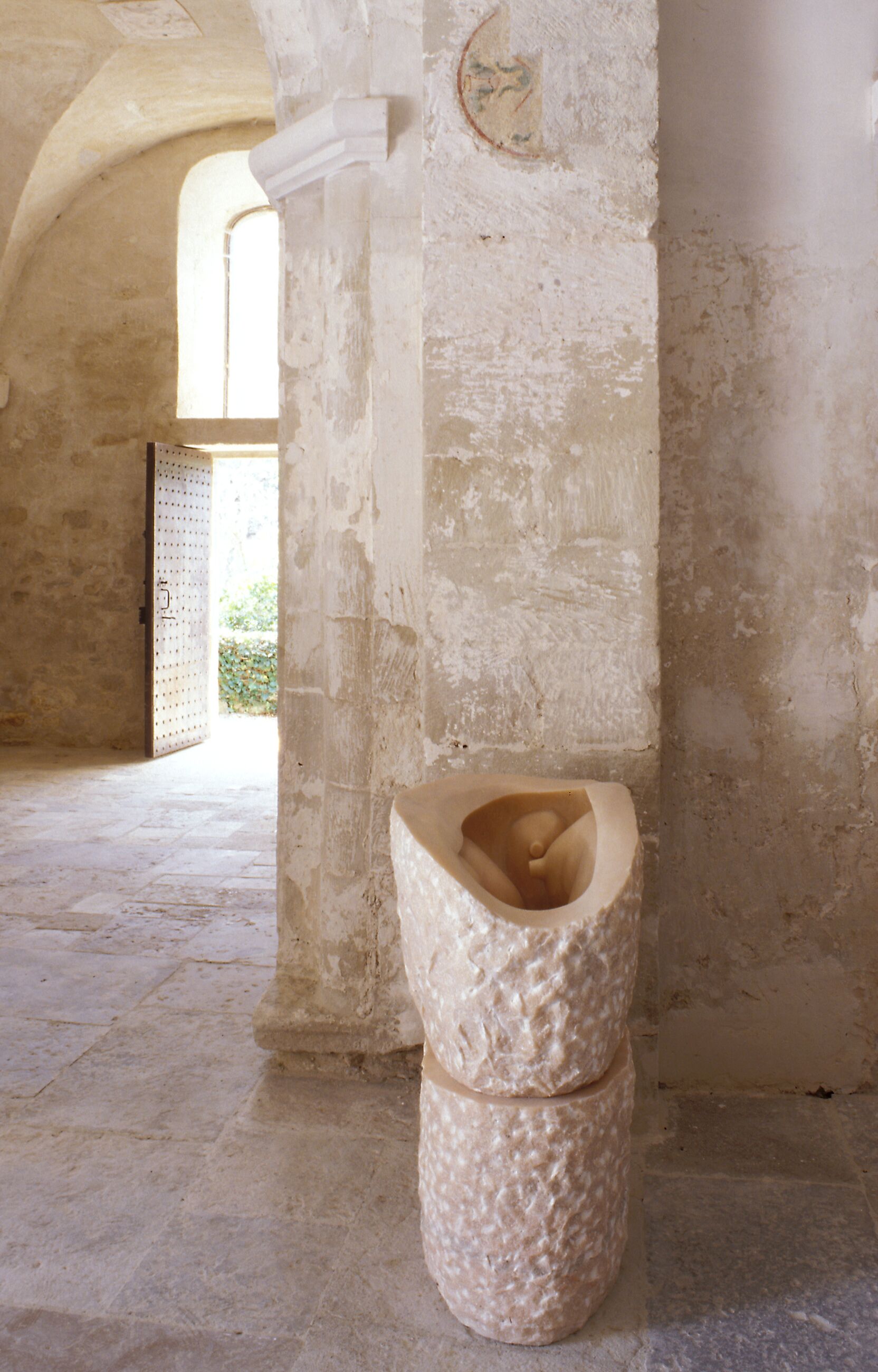
Église Louise Bourgeois, Bonnieux, France. Photo: Jean-François Jaussaud © The Easton Foundation / DACS, London and VAGA at Artists Rights Society (ARS), New York
Église Louise Bourgeois
Le Couvent d’Ô, Bonnieux, France
In 2001, Louise Bourgeois began creating a series of works for this 17th-century chapel in a small town in southeastern France, though Bourgeois once said, “I am not religious. In my work, I am interested in real flesh and blood.” Her site-specific sculptures tie into scenes of Christian iconography, including a marble baptismal font, a confessional, a fabric mother and child, and a bronze cross featuring both clenched and unclenched fists.
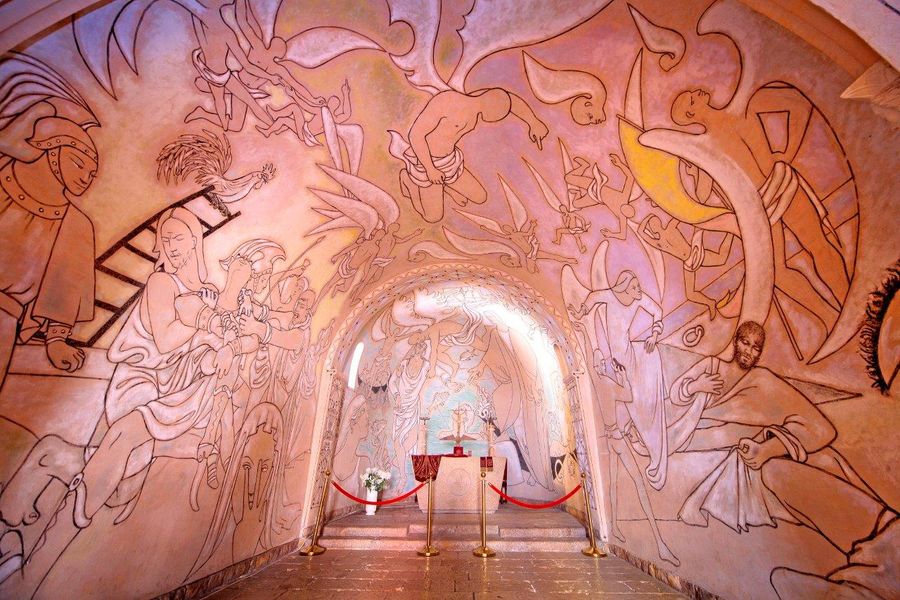
Interior of the Saint-Pierre chapel featuring painted murals by Jean Cocteau. Photo © Villefranche-sur-Mer / @villefranchesurmer
La Chapelle Saint-Pierre “Cocteau”
Villefranche-sur-Mer, France
This singular mural by Jean Cocteau is hidden within a Romanesque chapel in the Riviera town of Villefranche-sur-Mer. Illuminating the life of Saint Peter, the patron saint of fishermen, the work was completed between 1956 and 1958, just before Cocteau filmed the final installment of his Orphic Trilogy.
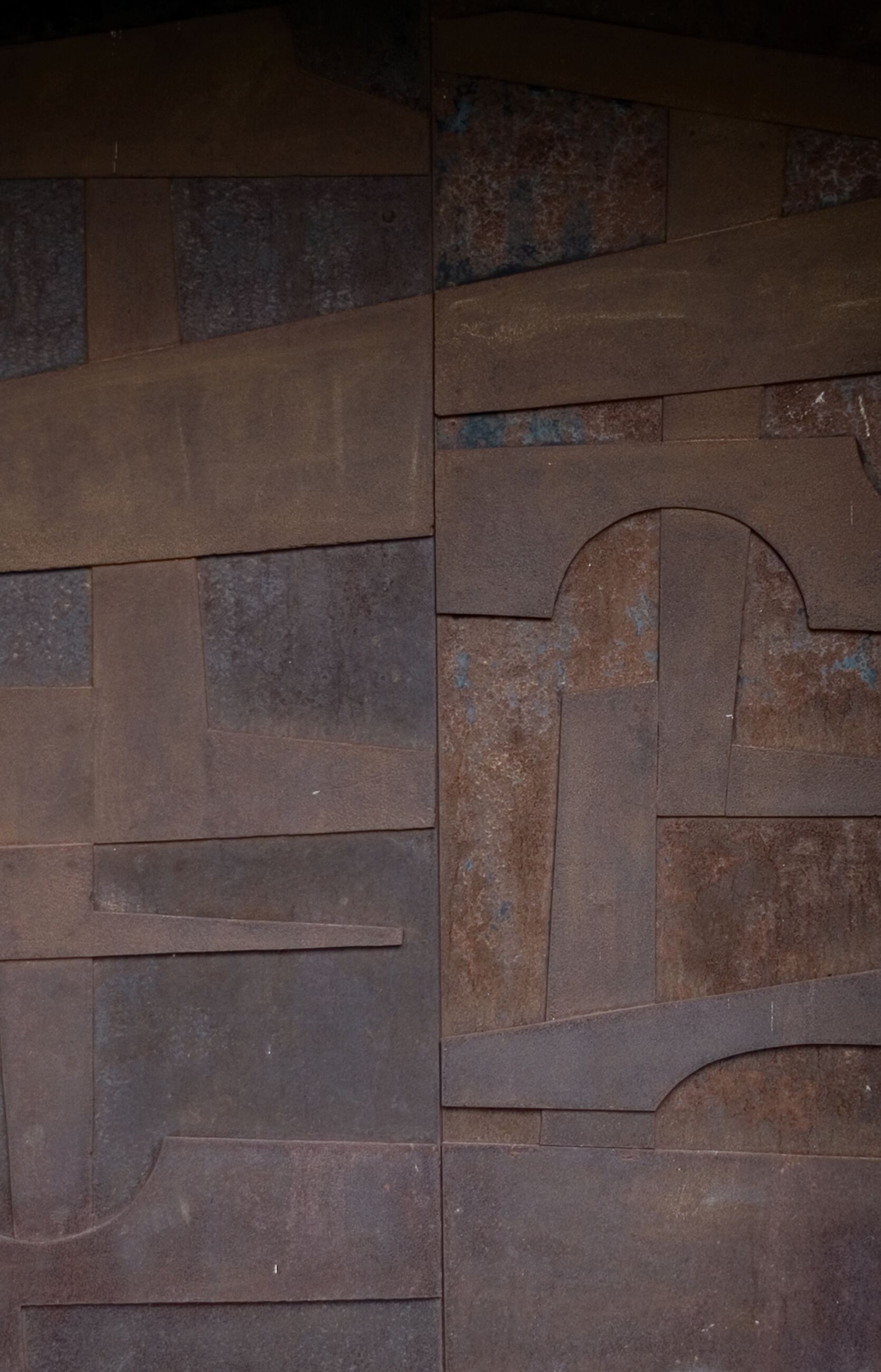
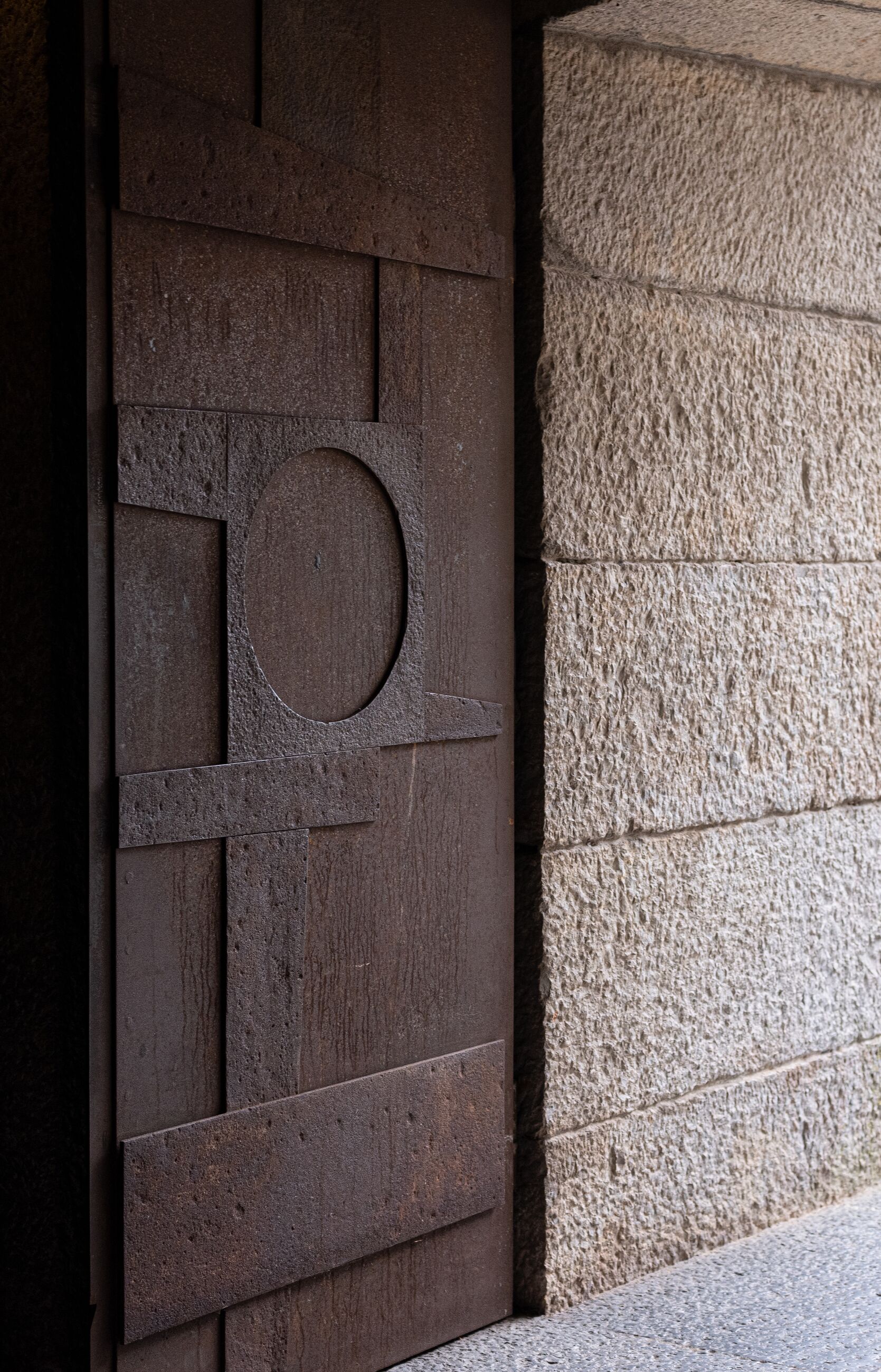
For his first major public commission, Eduardo Chillida sculpted four doors from steel salvaged from the Basque port of Zumaia. Photo: Juantxo Egaña
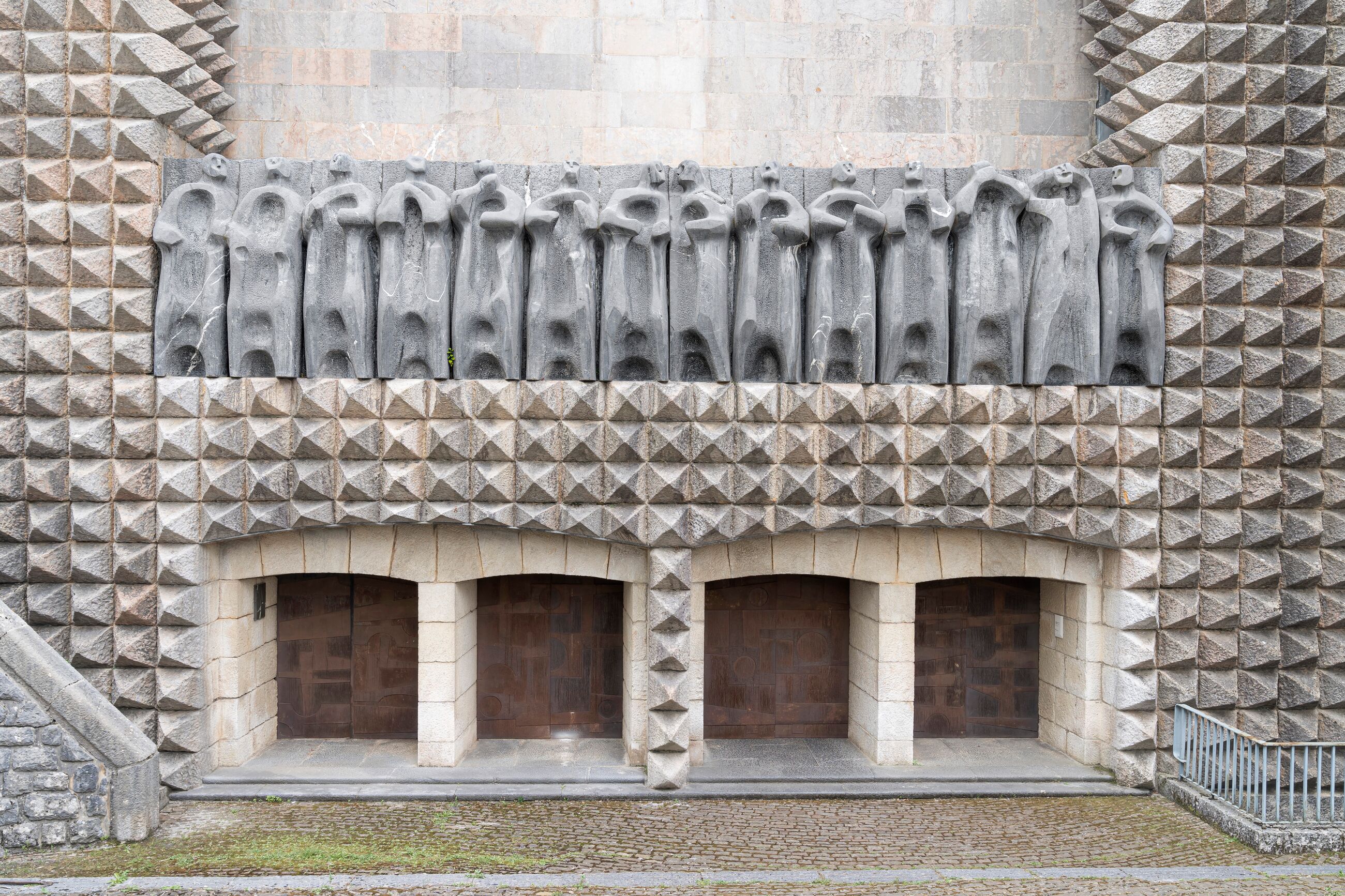
Exterior of Santa Maria de Arantzazu Basilica featuring fourteen apostles by sculptor Jorge Oteiza. Photo: Juantxo Egaña
Santa Maria de Arantzazu Basilica
Oñati, Spain
Perched on a cliffside in the Basque Country’s Aizkorri-Aratz Natural Park, the Sanctuary of Arantzazu has served as a site of pilgrimage and Franciscan devotion for over five centuries. In 1951, a new basilica was constructed under architects Francisco Javier Sáenz de Oiza and Luis Laorga. Several Basque artists were invited to create site-specific works, including Jorge Oteiza, Nestor Basterretxea, Lucio Muñoz and Eduardo Chillida.
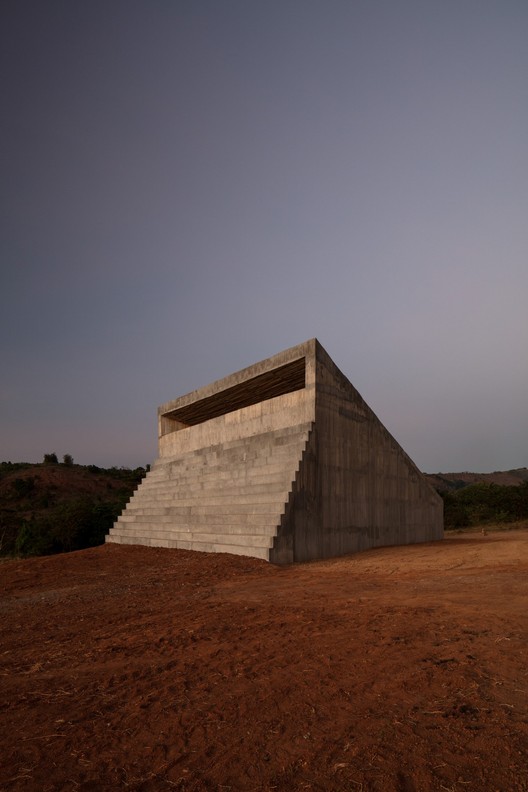
Exterior view of Not Vital’s Bataan Chapel. Photo © Eric Gregory Powell
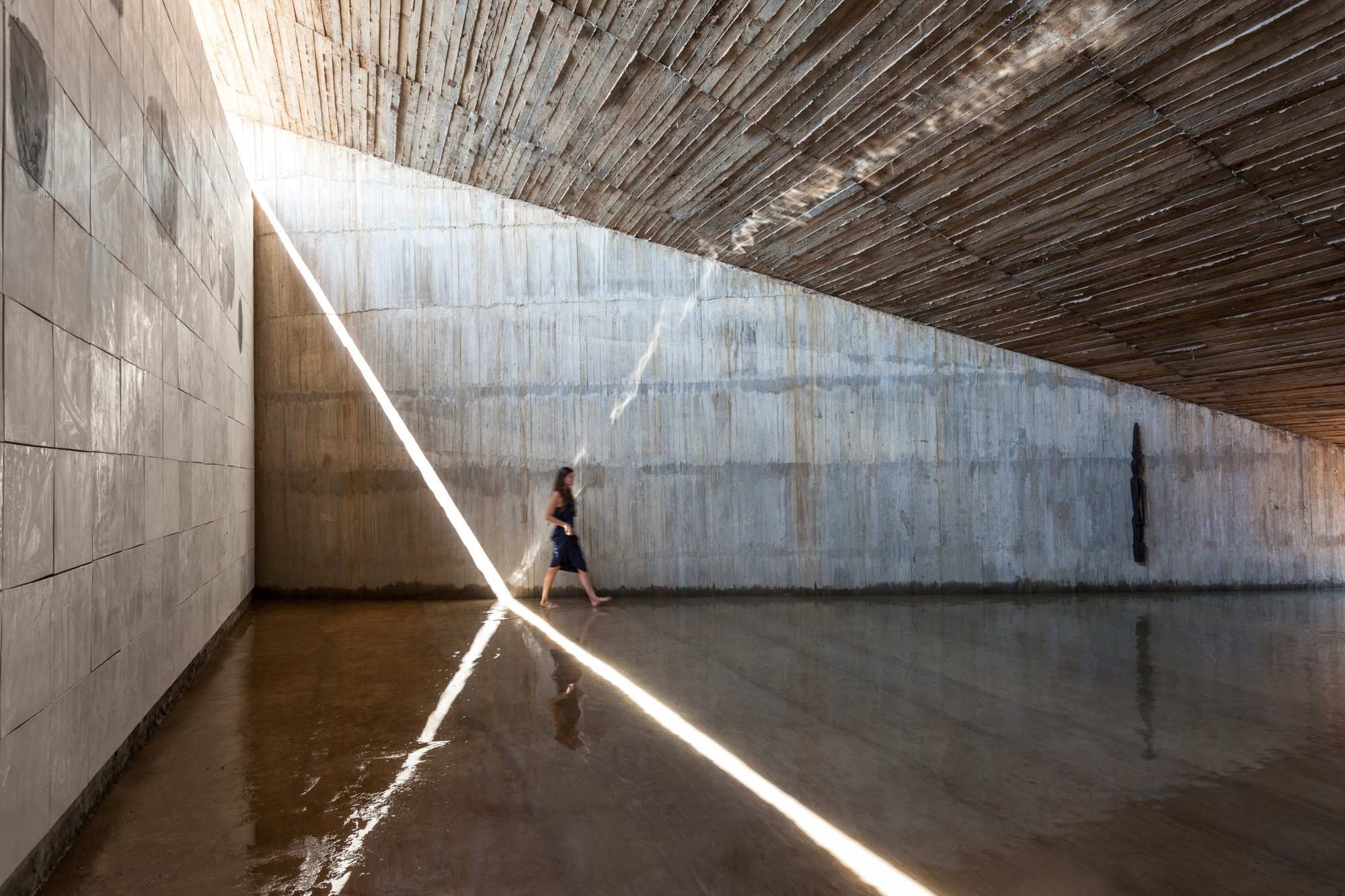
Interior view of the Bataan Chapel, lit by the opening above The Last Supper. Photo © Eric Gregory Powell
Bataan Chapel
Bagac, Philippines
In a remote town near Manila, Swiss artist Not Vital’s geometric chapel enters into a curious dialogue with the surrounding rice fields. A narrow entrance leads to an angular cast-concrete interior, housing a ceramic mural of The Last Supper and a wooden Bulul statue—traditionally used by Bataeños to protect the harvest.
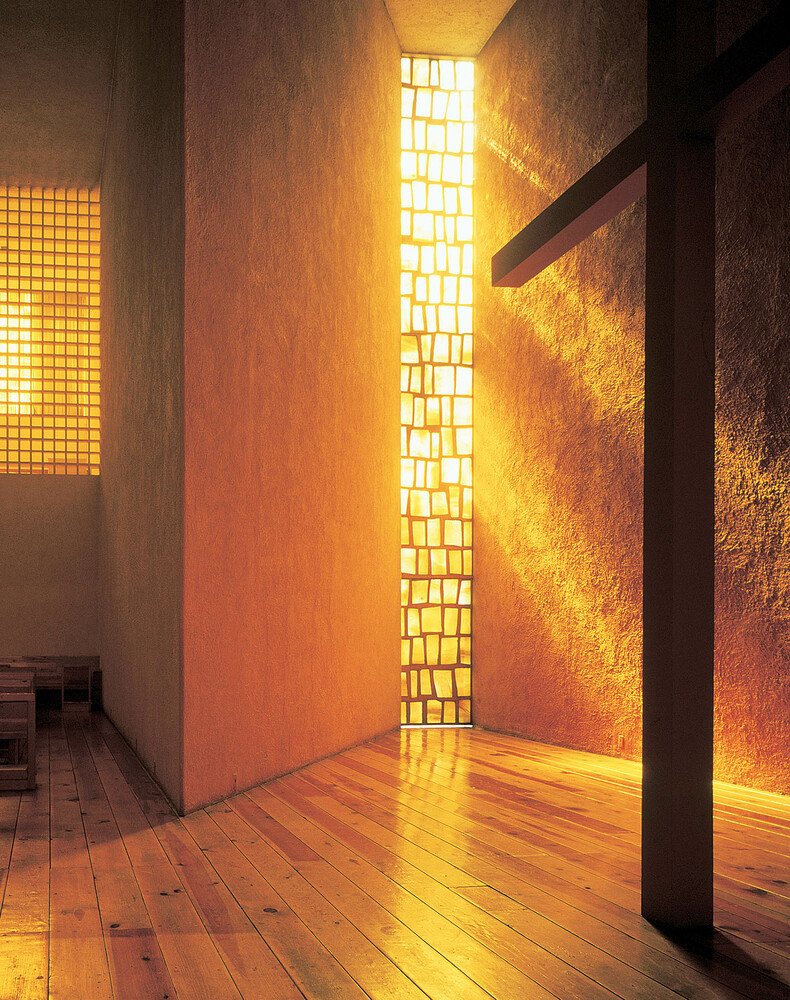
Capuchin Convent Chapel, Mexico City, 1954–1963. View of the freestanding cross and the quilla © 2025 Barragan Foundation / DACS. Photo: Armando Salas Portugal
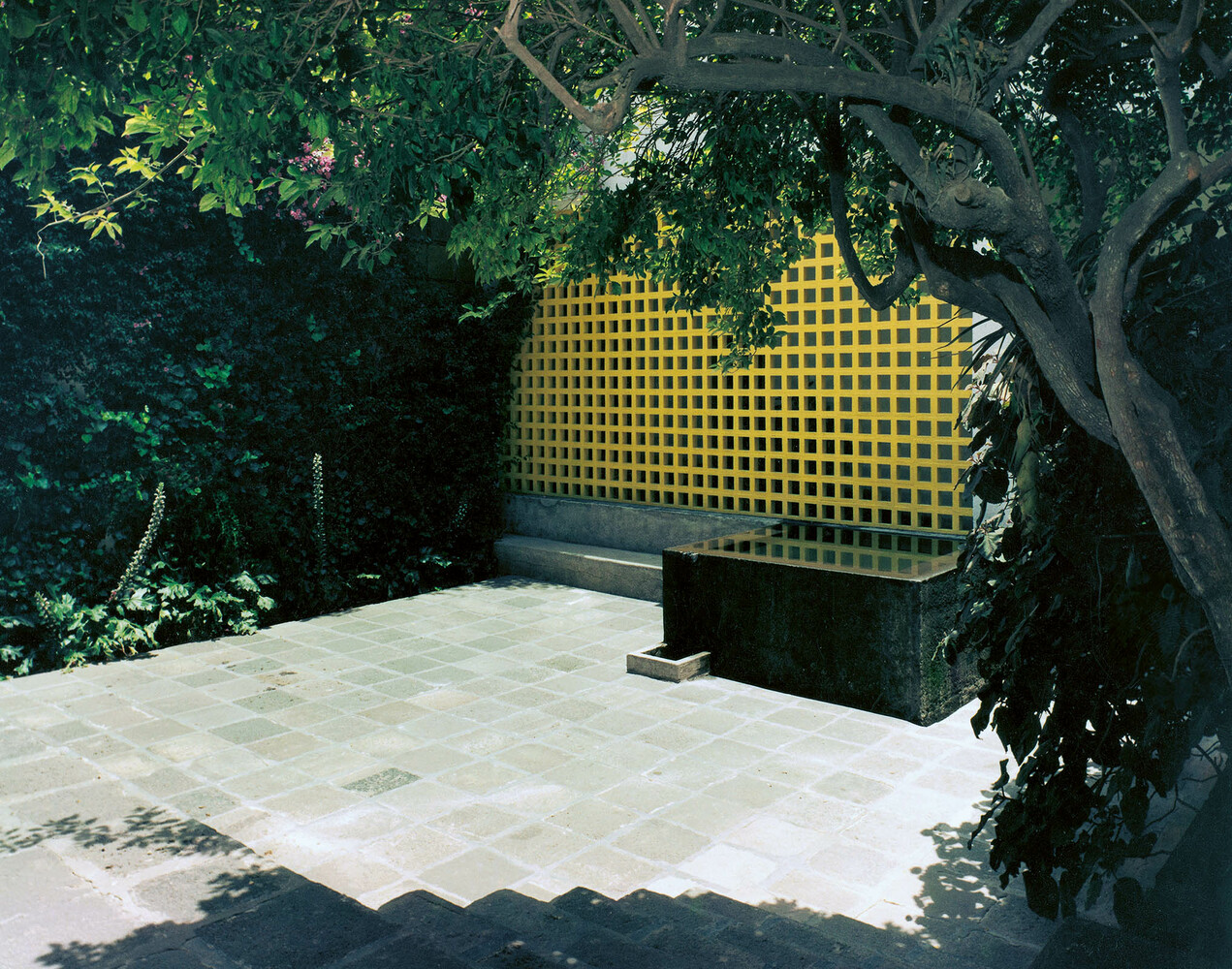
View of the courtyard © 2025 Barragan Foundation / DACS. Photo: Armando Salas Portugal
Capuchin Convent Chapel
Mexico City, Mexico
Constructed between 1954 and 1963 in Tlalpan—then a village south of Mexico City—this chapel stands as a masterwork of modern spiritual architecture. Luis Barragán’s attention to detail unfolds across the paved patio’s yellow lattice wall and cuboid fountain, and the rectangular chapel’s quilla—an angular architectural device—and stained-glass window by artist Mathias Goeritz.
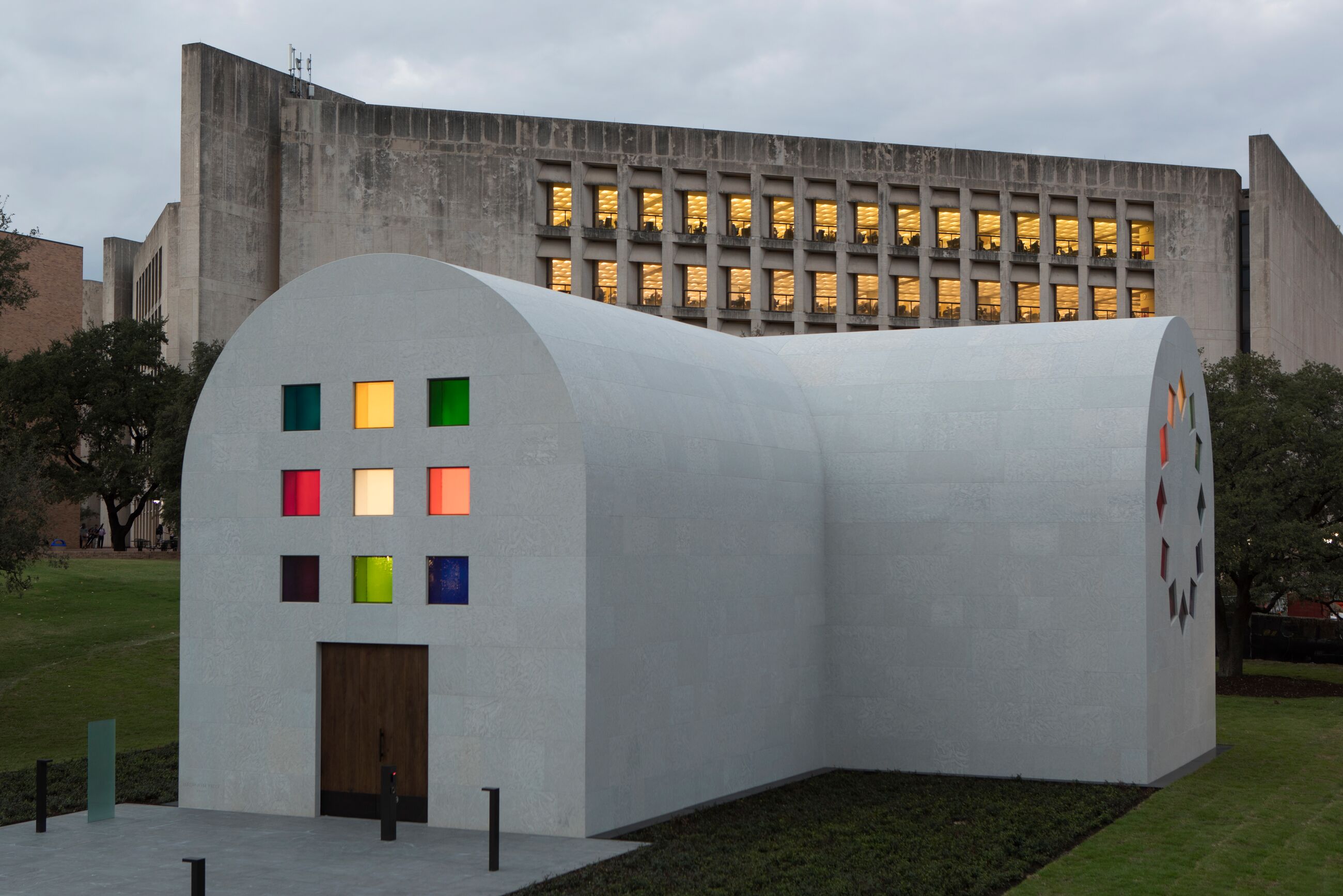
Exterior view of Ellsworth Kelly, Austin, 1980/2015 © Ellsworth Kelly Foundation. Courtesy Blanton Museum of Art, The University of Texas at Austin. Photo: Kate Russell
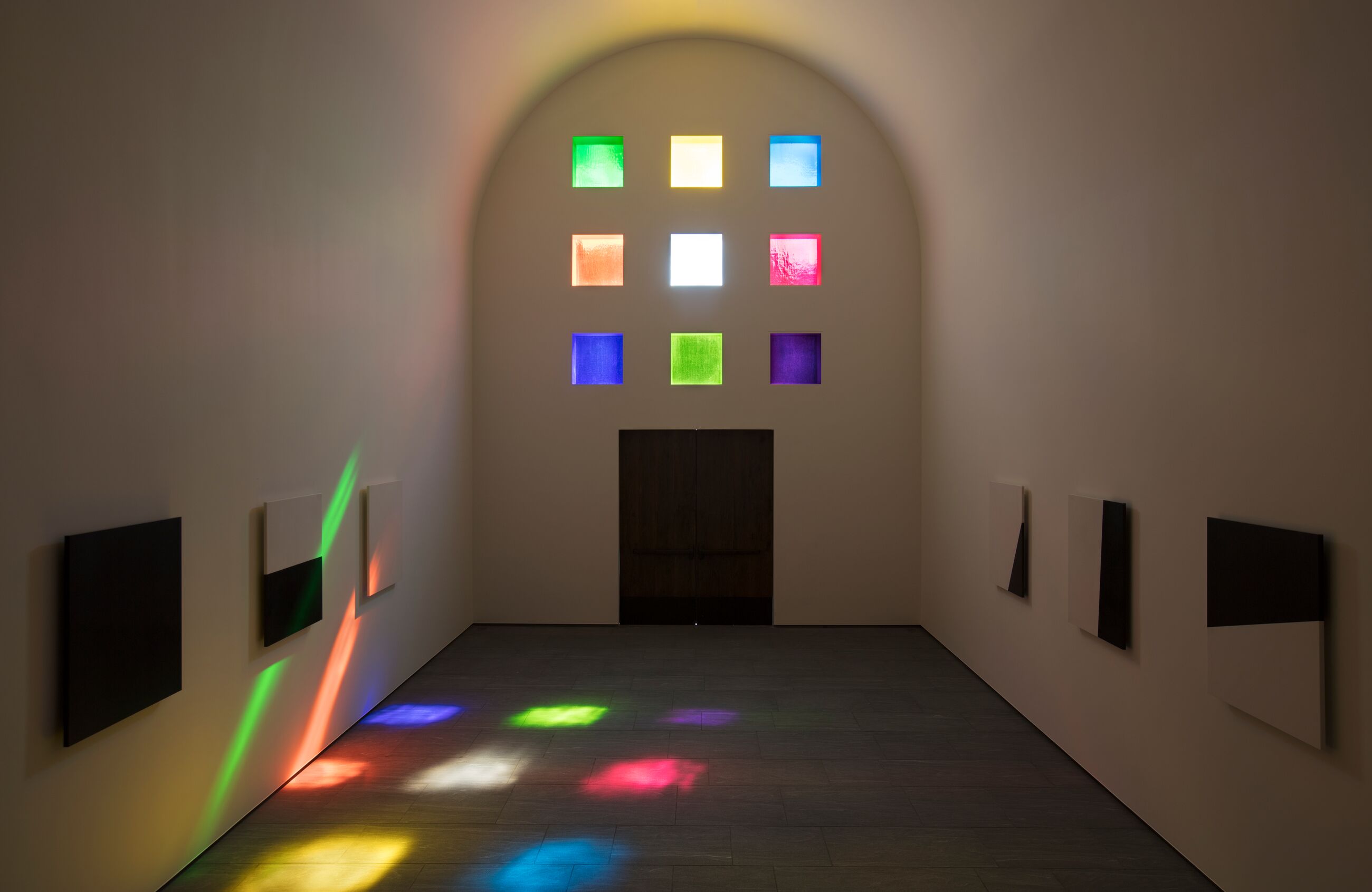
Interior South View, Ellsworth Kelly, Austin, 1980/2015 © Ellsworth Kelly Foundation. Courtesy Blanton Museum of Art, The University of Texas at Austin. Photo: Kate Russell
Austin Chapel
Austin, Texas
Conceived in 1986 and realized in 2015, Austin is the only building ever designed by Ellsworth Kelly. The full color spectrum radiates through Kelly’s abstract glass windows, arranged in sunbursts and grids on the walls of the stone structure. Inside, black-and-white marble panels and a redwood totem complete this artistic space of reflection.
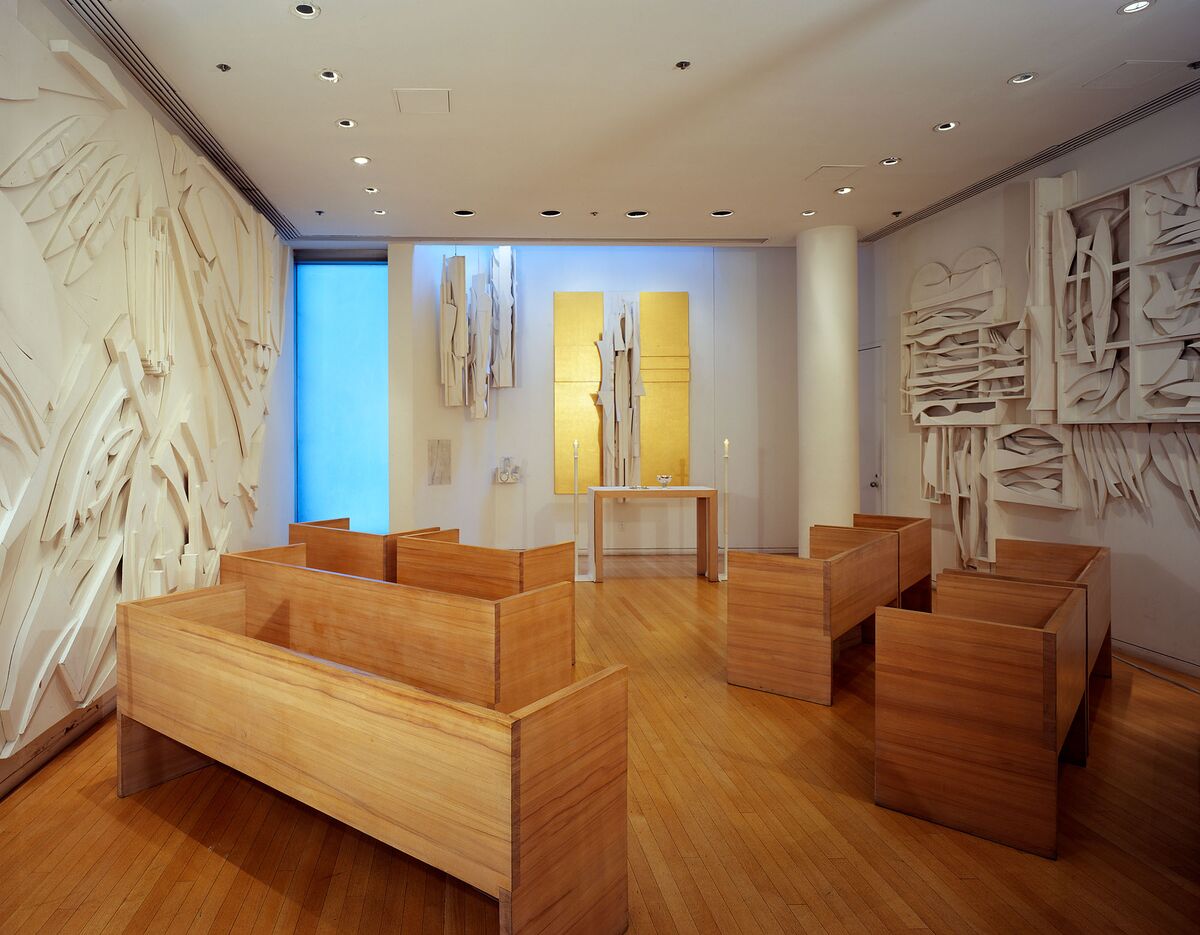
Interior view of Louise Nevelson’s Chapel of the Good Shepherd © 2025 ARS, NY and DACS, London
Chapel of the Good Shepherd
New York, New York
The only chapel of its kind in New York, Louise Nevelson was commissioned to create a new church for St. Peter’s in Midtown Manhattan in 1977. The American artist’s meditative sculptural environment features her distinctive white-on-white wall reliefs, complemented by a single window and a gleaming gold panel.
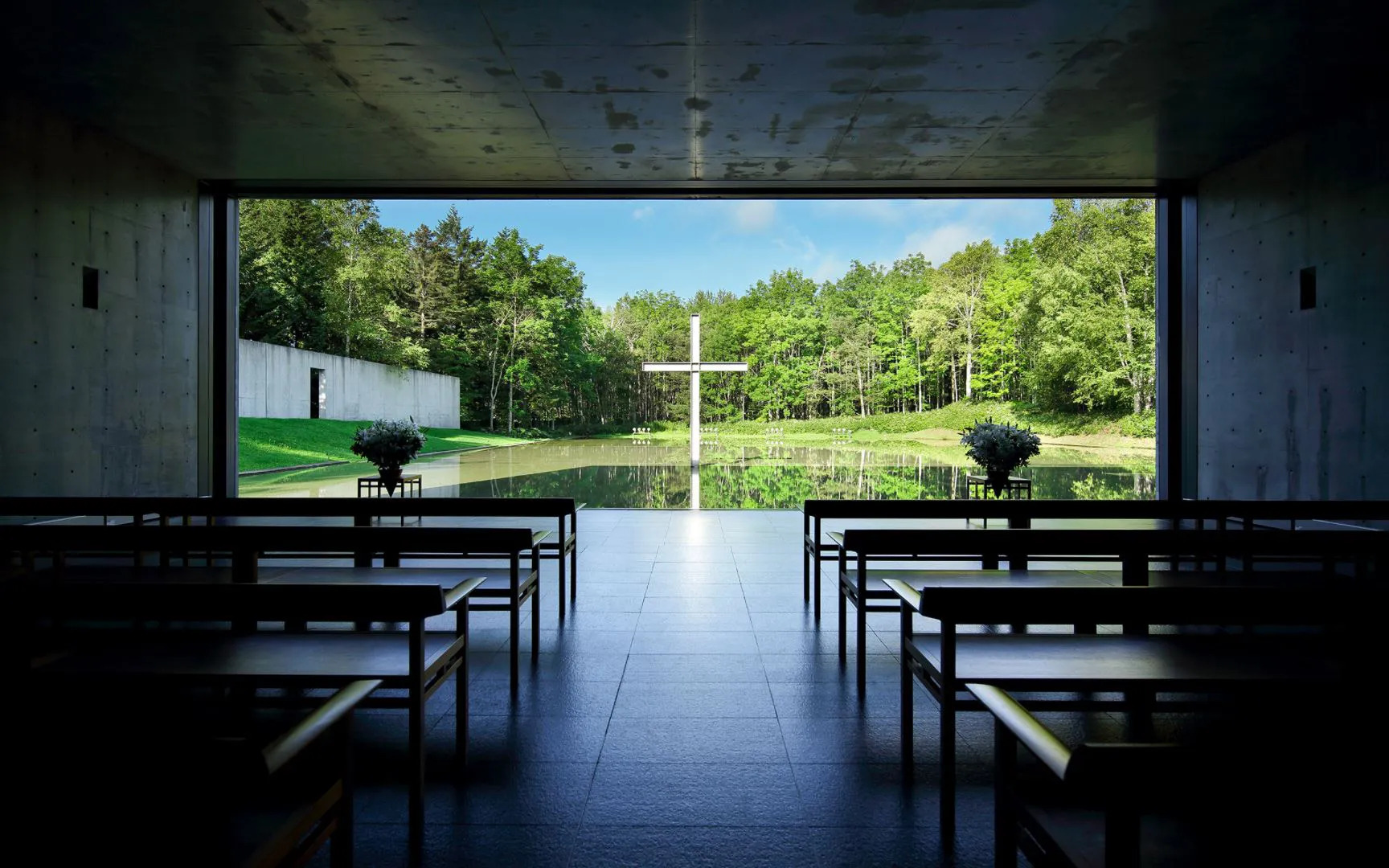
Church on the Water by Tadao Ando, Hokkaido © Hoshino Resorts. Photo: Hirofumi Inaba
Church on the Water
Hokkaido, Japan
In the heart of Hokkaidō, Tadao Ando’s Church on the Water is defined by a glass wall that dissolves the divide between architecture and the natural world. Embracing the Japanese concept of “shakkei” (借景), or “borrowed scenery,” Ando places a single steel cross on the surface of the adjacent pond. Its quiet reflections take the place of a traditional altar, offering a view shaped by light, sky, landscape—and the ever-changing seasons.
